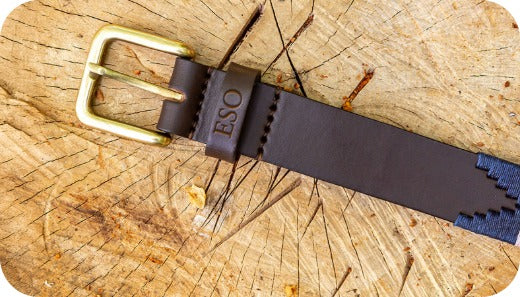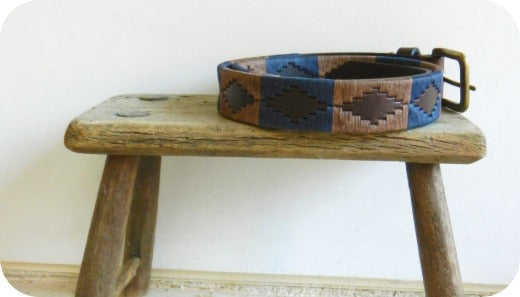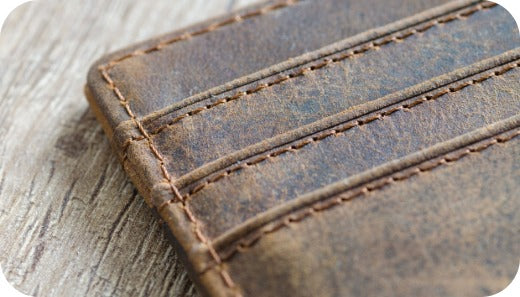Polo har ofte blitt kalt «kongenes sport», men dens innflytelse går langt utover banen. Polo ble født for over to årtusener siden og en gang brukt til å trene kavaleri, og har utviklet seg til et globalt symbol på arv, eleganse og eventyr. I dag kan dens innflytelse sees i alt fra catwalk-kolleksjoner til hverdagstilbehør, og representerer en sømløs blanding av robust praktisk sans og raffinert stil.
En arv preget av prestisje
De tidligste registrerte polokampene dateres tilbake til det 6. århundre f.Kr. i Persia. Lagene bestod noen ganger av over 100 ryttere per side; det så ut til å være mer et krigsspill enn en sport. På slutten av 1800-tallet brakte britiske teplantere i India polo til Vesten, hvor det raskt trollbandt aristokratiet.
Polo spredte seg så raskt at det innen 1900 var en del av Paris-OL, og tiltrakk seg spillere fra Argentina, Storbritannia og USA.
For merkevarer skapte disse røttene i militære ferdigheter, koloniale reiser og overklassens fritid en ferdig identitet: sofistikert, eventyrlysten og kosmopolitisk.
Designpåvirkninger født av funksjon
Polo-sportens krav – galoppering i 56 km/t, svinging av en 1,2 meter lang klubbe og pivotering på sekunder – drev innovasjoner som formet moderne stil:
-
Poloskjortens lengre bakkant , eller «tennishale», var opprinnelig for å holde skjortene gjemt inne under sykling. René Lacoste lånte ideen til tennistøy på 1920-tallet.
-
forsterkede sømmer på bukser og knelapper i skinn oppsto i poloutstyr for holdbarhet, og gjenspeiles nå i ridejeans og feltjakker.
-
De nummererte lagtrøyene som nå sees i fritidsklær stammer fra polo, der tallene 1–4 angir en spillers posisjon og rolle på banen.
-
Den berømte faja pampaen (pampa-beltet) startet som en måte for argentinske gauchoer og polospillere å dekorere hestens gjord og stropper med fargerike, håndvevde trådmønstre. Først senere fant disse designene veien til argentinske polobelter for folk.
Fargene og symbolene til Polo

Bilde: en polo-dommer på banen iført stripete skjorter
Pololag trengte farger med høy kontrast for synlighet, noe som førte til dristige kombinasjoner som marineblå og hvitt, rødt og svart eller smaragdgull fargehistorier som nå er innebygd i merkeidentiteter.
De brede «polostripene» i vekslende farger er fortsatt et moteelement, fra silkeslips til teppemønstre.
Quiz-knugget : På 1920-tallet populariserte argentinske polospillere broderte våpenskjold på blazere, noe som førte til at de ble tatt i bruk i skoler, yachtklubber og til og med bedriftslogoer.
Hestesymboler, fra kryssede klubber til galopperende hester, ble en forkortelse for eksklusivitet. Ralph Lauren bygde berømt et imperium rundt en poloponi-logo, selv om han aldri drev med sporten: et bevis på sportens ambisiøse tiltrekningskraft.
Fødselen av poloskjorten
«Poloskjorten» ble ikke opprinnelig oppfunnet for polo, men polospillere populariserte den.
-
På midten av 1800-tallet byttet britiske spillere i India ut stive skjorter med krage med myk bomull med knappekrager for å stoppe flagrende skjorter under spill.
-
Dette designet fanget oppmerksomheten til den amerikanske syartiklerforretningsmannen John E. Brooks, som adapterte det til Brooks Brothers' button-down-skjorte i 1896 – fortsatt en fast bestanddel av smart-casual-garderober i dag.
-
Tennislegenden René Lacoste forkortet senere ermene og skapte den moderne pikéstrikkede poloskjorten i 1926, et plagg som passer like godt på banen, golfbanen som i bygaten.
En livsstil utover spillet
Polo handler like mye om omgivelsene som om kampene: klirringen av champagneglass på velstelte plener, solhatter som skygger for tilskuere og helgeturneringer som føles som et skritt inn i en annen tid.
-
I Argentina trekker Argentine Open i Palermo, Buenos Aires , over 40 000 tilskuere årlig og sendes til mer enn 80 land.
-
I Storbritannia møtes kongelige, kjendiser og næringslivsledere på Guards Polo Club under Cartier Queen's Cup, hvor et dagspass kan koste mer enn £100.
Hvorfor poloskinn ble en motestandard
Tre nøkkelfaktorer forklarer poloskinnets innflytelse:
-
Ytelsestestet holdbarhet: hvis den kan overleve en kamp, kan den overleve bylivet.
-
Kulturarv: Rideutstyr bærer konnotasjoner av tradisjon, ferdigheter og prestisje.
-
Tidløst designspråk: rene linjer, naturlige materialer og funksjonelle detaljer går sjelden av moten.
Moderne tolkninger
Selv om det romantiske bildet av polo består, har sporten også utviklet seg. Tekniske stoffer erstatter tung bomull, kjønnsnøytrale uniformer dukker opp, og streetwear-merker blander polomotiver med urban estetikk. Selv motehus som Gucci og Dior har hentet inspirasjon fra polokulturen til nyere kolleksjoner, og blander arv med moderne opprør.
Belteforbindelsen og pampeanos polo-opprinnelse
Polobeltet, slik vi kjenner det, er en direkte etterkommer av sal- og gjordstropper:
-
flate profiler unngår at de setter seg fast
-
sterke spenner motstår belastning
-
Dekorsøm og fletting kom fra tøyler og stigbøyleskinn, og blandet funksjon med stil
I Argentina migrerte håndbroderte «pampa»-mønstre, som opprinnelig ble brukt til å dekorere hesteutstyr, til belter og ble en global motetrend. Disse mønstrene symboliserer Pampas-landskapet og bærer kulturarv med seg inn i hverdagsklærne.
pampeano – som betyr «fra La Pampa» på spansk – ble født i det bankende hjertet av Argentinas pololand. La Pampa er hjemsted for store gressletter, estanciaer og noen av verdens fineste poloponier. Det er her sporten ikke bare er en helgetidsfordriv, men en del av dagliglivet, vevd inn i kulturen sammen med hestesport, lærarbeid og gjestfrihet.
Sportens krav formet Pampeanos designprinsipper: å opprettholde de høyeste kvalitetsstandardene og levere eksepsjonelt håndverk.

Bilde: Pampeanos fargerike belter, håndsydd
Ved å blande denne autentiske sportsarven med moderne styling, bygger pampeano bro mellom to verdener: støvet og solen fra de argentinske polobanene og den polerte elegansen i hverdagsklær.
Avsluttende tanke
Polos designspråk, inkludert de rene linjene i en skreddersydd skjorte, selvtilliten i dristige fargeblokker og elegansen i et velplassert våpenskjold, har overgått sporten. Det har blitt en del av verdens stilvokabular, og påvirket merker fra luksusskinnprodusenter til sportstøygiganter. Og alt dette kan spores tilbake til et spill der fart, ferdigheter og stil deler samme sal.





